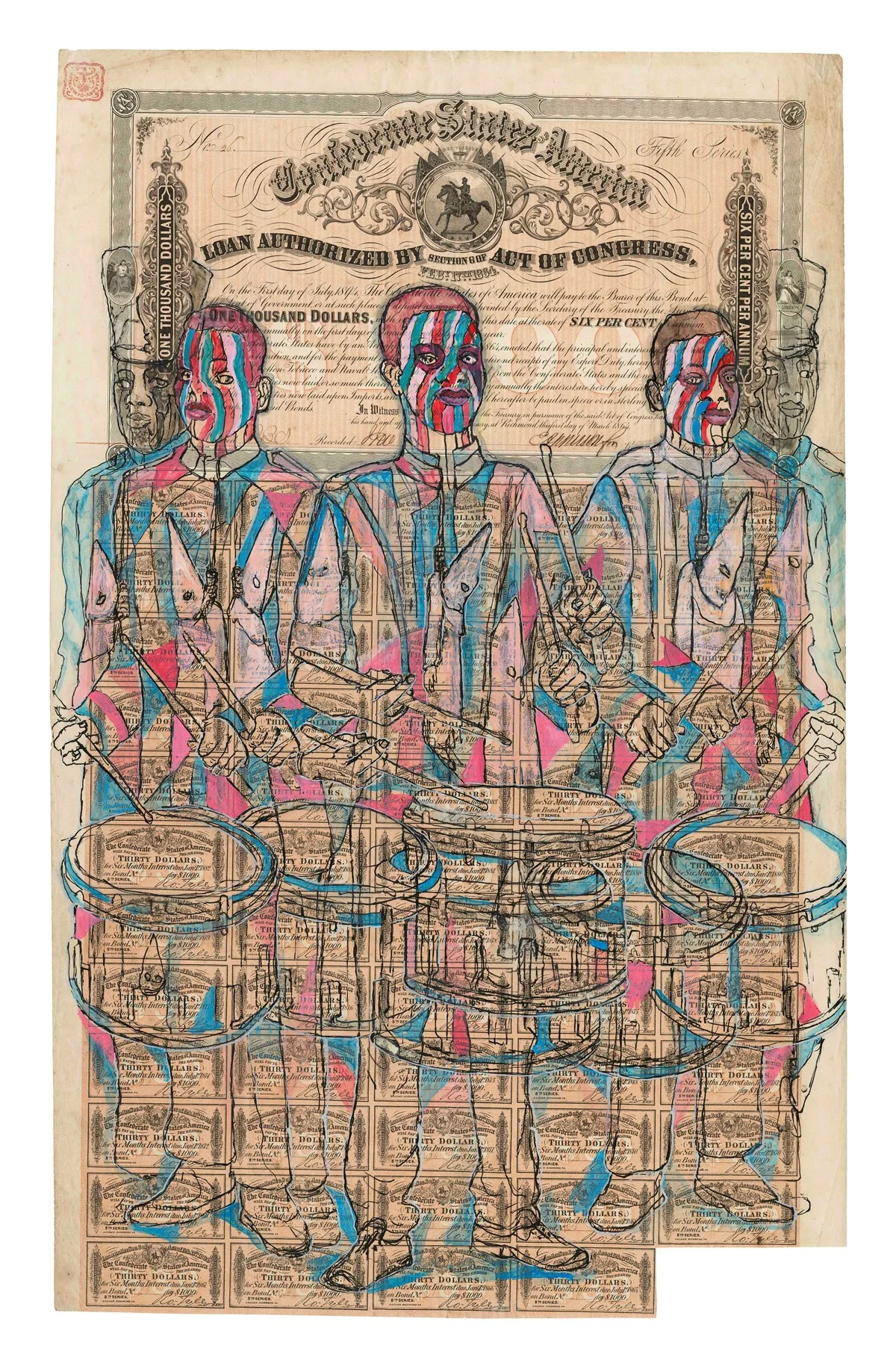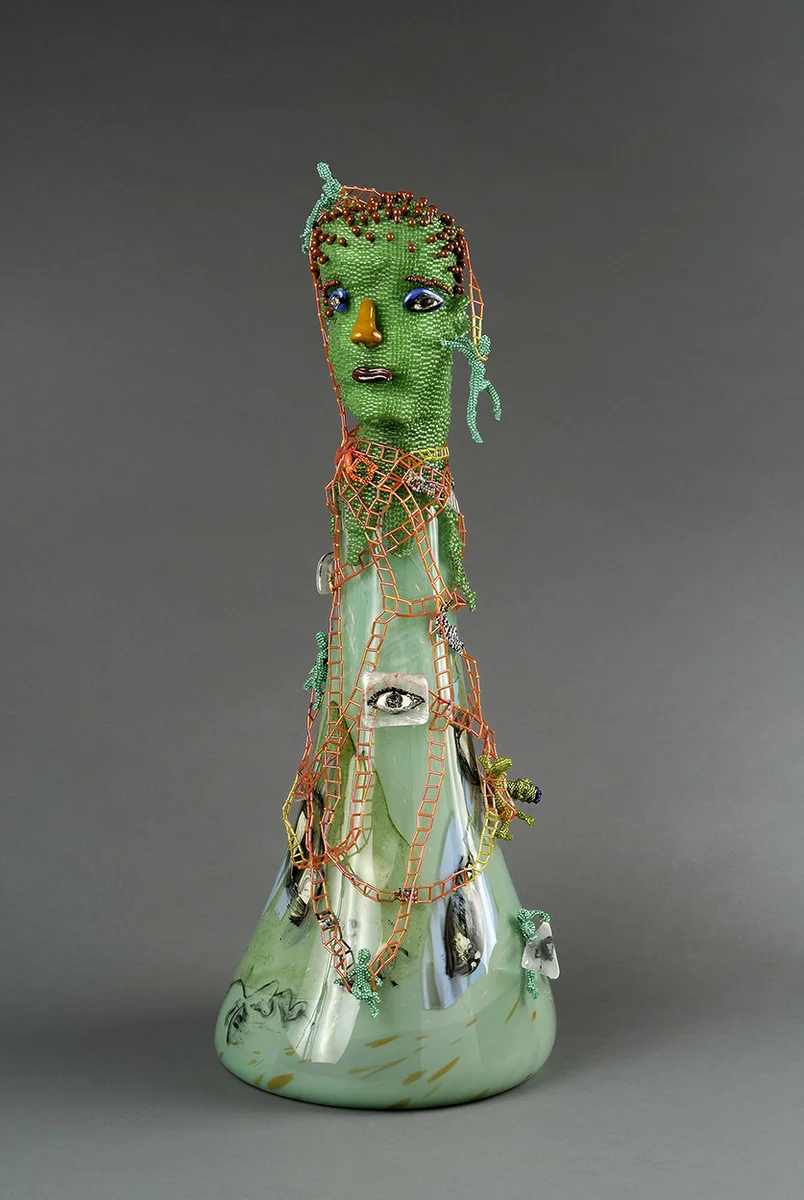Hew Locke
“Patriots”
New York, 535 West 22nd Street
The exhibition will continue Locke’s investigation into the role public statues play in the way national identity and history are formed, an element of his practice that he has been exploring since 2002. This interest was initially born out of seeing a statue of Queen Victoria taken down during his childhood in Georgetown, Guyana – an event that toppled his notion that the status quo was in fact static. Later, while living in London, Locke became fascinated with the Victorian statues that dotted the city, emblematic sculptures that were so visible that they had essentially become invisible to passersby. Embarking on a project that he dubbed the “Impossible Proposals,” Locke began photographing these iconic statues – from Richard the Lion Hearted, to the slave trader Edward Colston, to Edward VII – and then embellishing the photographs with objects, creating elaborate fetish figures imbued with a history that was largely being overlooked.
The exhibition at P.P.O.W will take as its starting point a series of contentious sculptures in the US, including of Peter Stuyvesant, George Washington, J Marion Sims, Alexander Hamilton, and Christopher Columbus, among others, several of which have been the subject of debate for removal over the past several years. Inspired by a tradition in Brussels in which different groups have the opportunity to dress up an iconic cupid figure in different costumes to represent their ethnicity or particular interest, Locke here envisions the opportunity for various ethnic groups to express their relationship to these figures through an elaborate and beautiful costuming ritual. After creating large-scale photographs of these statutes Locke richly decorates them, creating Baroque-like depictions of these figures.
Stuyvesant, Jersey City, 2018 c-type photograph with mixed media
Among the works on view will be a statute of George Washington decorated with Indian replica war medals, Pre-Colombian cut-outs, silver dollars, an illustration of a slave being tortured by William Blake, and a giant Manilla coin – a slave trading coin – dangling from his forearm. The work explores the relationship between finance and power, and the way in which Washington’s history has been revised to largely exclude the fact that he owned nearly 300 slaves. The portrait will illustrate the long and ongoing timeline of cause and effect and the arc of history that has followed since his presidency. J. Marion Sims – the only photograph on view of a statue that has been removed – will be covered with an image based on one of the women he experimented on, as well as a traditional African Luba carving, depicting a woman holding her breasts – a carving that references a woman holding secrets. He will be covered in small hessian sacks that have Cowrie shells and cheap badges of the Hippocratic sign attached, with a laurel crown on his head. The resulting work envisions him as a nearly heroic figure, an homage to the way he was portrayed historically. Together the works explore the complexity of opinion and perspective surrounding these historical figures and New York landmarks, overturning the notion that the debates surrounding the statues and the figures’ roles in history have been settled, and illustrating the lasting effects of these “patriots’” actions hundreds of years later.
Also included will be “Song of the South,” a series of drawings created on real confederate shares that reference black minstrel history. The works recall Locke’s many trips to Georgia as a child to visit his father encountering objects in antique shops that reflected the South’s dark history. The works on view not only explore these ideas of Patriotism and Americanism through what Locke describes as his Guyanese point of view, but reflect his many encounters in the US over the past several decades. The exhibition also continues Locke’s interest in exploring the lasting impact of Colonialism, and will include a 9-foot-long refugee boat, embellished and installed in the backroom of the gallery. The installation, which addresses the desperation of people trying to cross the ocean to safety, will be installed against a backdrop of wallpaper made up of confederate shares and maps of Africa and South America. The work is in conversation with the photographs of the statues on view, as Locke imagines these new immigrants walking around and encountering these statues, trying to assess what these people and this history means to them.
On view through November 10, 2018







